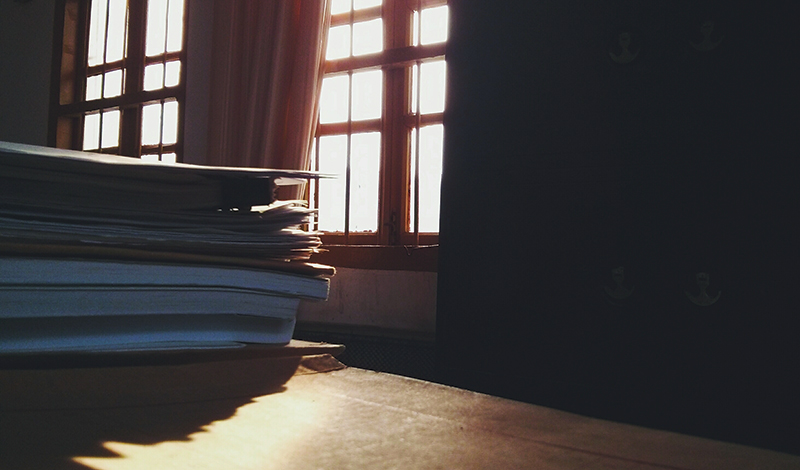Tsunesaburo Makiguchi greeted his students at the school gates every morning, come rain or shine. He considered all aspects of their well-being. Were they cold? Had they eaten a proper meal? He prepared lunch for students who would otherwise go without, discreetly placing the meals in the janitor’s room so the students wouldn’t feel ashamed. In fact, Mr. Makiguchi’s lunch initiative appeared in the December 8, 1921, Yomiuri Shimbun, the article reading in part:
Mikasa Elementary School in Honjo has recently undertaken a new program to provide free school lunches to about one hundred students selected from low-income families. Based on cost and available facilities, a meal consisting of one bread roll (about 4.5 ounces) and two bowls of broth with tofu and vegetables will be provided free of charge. (The New Human Revolution, vol. 25, p. 336)
Tsunesaburo Makiguchi, as the founder of Soka education and the Soka Kyoiku Gakkai, the precursor to the Soka Gakkai, had a clear, yet revolutionary goal as an educator: the happiness of each student.
During his childhood, Mr. Makiguchi experienced a succession of struggles, which perhaps fueled his desire to fight for the happiness of youth. In 1874, when he was 3, his father left the family to work in Hokkaido. Two years later, his mother remarried and he was sent to live with relatives. In 1884, at 13, he left his adopted family to work in Hokkaido, presumably to look for his father, whom he never found.
When Mr. Makiguchi became an educator in 1893, he became known for his detailed and impartial care for each student. Ikeda Sensei writes of Mr. Makiguchi’s early career:
Sometimes after school, he would carry the smaller children on his back and lead the older ones by the hand and take them home. He also warmed water to bathe the chapped hands of his students. (NHR-25, 329)
In 1912, working as a teacher at Tosei Elementary School in Tokyo, he observed that many students couldn’t afford to buy school supplies. Mr. Makiguchi responded by purchasing school supplies in bulk and selling them at lower prices to ensure the students had everything they needed to learn.
He was appointed principal of the new Taisho Elementary School in 1916, serving concurrently at Tosei, with both schools located in poor neighborhoods. As such, the majority of the students were forced to work and school attendance was low. He visited the homes of students who weren’t attending class and patiently explained to their parents the importance of education, which resulted in many of the students returning to school.
But while at Taisho, an influential family demanded their child be given special treatment. Mr. Makiguchi refused to comply, and a local politician led a campaign for his ouster. Sensei writes about his spirit:
Makiguchi loved all his pupils, but he made a special effort for underprivileged children or those with difficult circumstances. He also refused to ingratiate himself to the authorities for personal advancement. (NHR-25, 331)
After his dismissal from Taisho in December 1919, Mr. Makiguchi was assigned to Nishimachi Elementary School, where he met Josei Toda, who had recently moved to Tokyo from Hokkaido. Just three months later, however, Mr. Makiguchi was dismissed again for failing to make a courtesy call to the same influential politician, and was sent to Mikasa Elementary School and night school, located in an area of extreme poverty.
Mikasa had been known as a dead-end assignment where educators were sent in anticipation that they would resign. Mr. Makiguchi, however, was emboldened by his new assignment, moving his wife and eight children to a residence on the school grounds. Sensei describes Mr. Makiguchi’s motivation, writing:
Broken windows were covered with thick paper to block out the wind. … At the school, the classroom time for the 800 students in 15 different classes was divided into three periods. Students in the first through fourth grades studied in the mornings and afternoons, and all the students in the fifth and sixth grades studied in the evening. Classes, therefore, were scheduled mostly until 9 in the evening, with some classes held as late as midnight. The reason Makiguchi decided to live on campus was so that he could be on call for the pupils 24 hours a day. (NHR-25, 335)
In 1922, Mr. Makiguchi was reassigned to Shirokane Elementary School, transforming it into a renowned school for educational excellence.
It was through his succession of posts at elementary schools, many in poor neighborhoods, that Mr. Makiguchi refined his educational theories into practical form.
On November 18, 1930, his views on education, centered on the lifelong happiness of learners were published as The System of Value-Creating Education by the Soka Kyoiku Gakkai, and the publication date is considered to be the founding date of today’s Soka Gakkai.
Tsunesaburo Makiguchi not only espoused a persuasive educational system for the happiness of each student but also demonstrated his dedication to them through his actions. Mr. Makiguchi’s timeless example of Soka care forms the basis not only of Soka education but also the spirit of the Soka Gakkai.
You are reading {{ meterCount }} of {{ meterMax }} free premium articles

